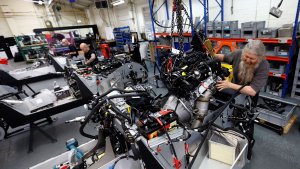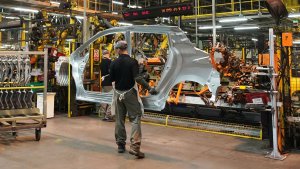For manufacturers, growth is a nice problem to have but it's a problem all the same. It's important to agree on a specific path, or else you could be inviting chaos into your business.
Ensure Your Growth Plans Don’t Outgrow Your Business
For manufacturers, growth is a nice problem to have but it's a problem all the same. It's important to agree on a specific path, or else you could be inviting chaos into your business.

From net profit to geographic expansion, to building up infrastructure to exploit changes in technology; as manufacturing becomes faster, more responsive to changing global markets and closer to customers, growth comes in many forms and research has shown that ‘managing growth expectations’ is the top challenge facing businesses today.
The challenges are multi-faceted. It can refer to the simple definition of the term ‘growth’ across the business, which if left unclear can make the journey challenging as no one really knows where they are heading. Alternatively, it can refer to the unpredictable factors that arise throughout the growth process.
With the amount of uncertainty that faces a business on the cusp of progression, it’s imperative that the basics are addressed first.
From the outset, business leaders need to agree a common definition of growth and communicate that throughout the company as each and every employee will be affected.
Without a clear understanding of what the term means, difficulty and confusion can arise, not only in terms of priorities across the many departments within a manufacturer, but also when looking to identify challenges and putting the necessary resources or technology in place.
Whether it’s the cleaner that has to take care of an expanding office; the finance team that has to manage an increased inflow and outflow of invoices; the IT team that has to ensure the right technology is in place and up to date; the production manager that needs to plan and organise increased production schedules; or the C-level executives that need to ensure that the return on investment is on par with the originally defined targets, everyone needs to be on the same page.
Once this definition has been agreed upon, the focus needs to move to potential drivers of growth. Typically, external factors are close to impossible to forecast without a crystal ball, particularly economic changes, revised customer needs, and new competitors or the latest technologies.
Growth in times of uncertainty will never be simple, but it is possible. The priority should be to put systems in place to help the business not only be more alert to external factors, but to be able to react to these factors when necessary.

It's not about predicting the future, but being flexible enough to deal with challenges as they arise
Analytic technologies in particular can help manufacturers establish patterns in trends, economic changes or customer and competitor behaviour, and the onus is on the organisation to react and react quickly.
With the right technology in place, for example modern enterprise resource planning (ERP) systems, a manufacturer has the agility and flexibility to amend action mid-plan and either implement new designs to meet customer demand or switch focus to new emerging markets.
This agile attitude is a necessity to tackle growth, especially in the constantly changing current climate we are living in. Manufacturers need to learn to walk before they can run and start their development with early discussions to ensure a common definition of growth is agreed, and ensure the relevant planning and technology is in place.
Future-proofing and maturing a manufacturing business isn’t straightforward but by implementing the necessary processes, a business can react to unforeseen circumstances and pave the way for the ’process of increasing in size’.
Thanks for signing up to Minutehack alerts.
Brilliant editorials heading your way soon.
Okay, Thanks!



